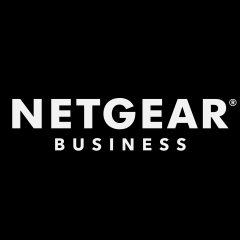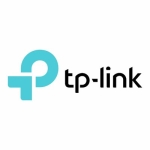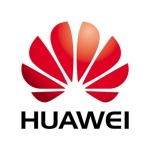What is our primary use case?
We put them in locations that are far away from us. We're located in Indiana but we've put them is in Kansas. The solution enables us to manage it like we are actually in Kansas and we can do almost anything remotely, so that's why we deployed them there.
We're using the GC728XP, that's their 24-port Insight switch.
How has it helped my organization?
In terms of use and deployment, it's really easy because we have the customer set up already, so the configuration gets downloaded right away. Once you have your first customer set up, any switch that you buy for them, going forward, the setup time for that up gets cut down dramatically. Technically, we don't have the set up the switches at our office. We could just send them directly to Kansas. But we always like to double-check. It does go through a few rounds of firmware and we want to make sure that it always gets to the correct one. Sometimes customers don't realize how many times it needs to update.
What we've found is that if you give your customer access to their admin portal, even though, as a managed service provider, they're paying us to manage their equipment, the insight it gives them means they can actually see what they're paying for now. It's really user-friendly. It's very visual, so you can see what ports are being used. Visually, it's much easier for a customer to understand what they're paying for, which helps us, as a managed service provider, retain those customers. That's what we really like about it.
Another way it's helped is, let's say a network is down. Instead of my trying to talk with an end customer to get them to troubleshoot - and that's going very slowly, because they're trying to do their own job - what happens instead is that I can do it remotely and get it done maybe within an hour or so.
Instead of
- working with an end user for a couple of hours, and
- when that doesn't work, sending someone for a minimum eight-hour drive to the closest one in Kansas and as much as a 14-hour drive to the farthest - that would be almost two days where I lose a tech just driving. Then another day for them to fix the issue themselves and then the time to drive back. So, if it's the furthest location, I could lose a full week of an employee's time, instead of an hour or two troubleshooting within the portal.
Finally, the cost of the hardware and additional services is low and it helps our business because that's exactly what our customers are looking for. We can finally upgrade their old equipment and they can get something newer with all of the features that we wanted to give them and it's actually in their price range. Before, they weren't willing to upgrade their equipment because, if they want it cloud-managed, the solution was too expensive. This has helped our business to provide better service to our customers, and that's what they look for from us.
What is most valuable?
Their online portal is one of the most useful features. The portal is very user-friendly, so even someone with not a lot of tech experience can go in and see what's going on with the switch.
The newest release, where we get to schedule firmware updates, is another extremely useful feature. The firmware updates are great for us because we can schedule them in off-hours for the business and at times where we'd rather not be physically at the office waiting for a switch to update.
Those two are the features we use most. But they have a lot of features, all the way down to port-level insight, seeing which ports are being used, what's happening. Cable Test is another one. We haven't used it that often because we haven't had a need to, but it's nice that that feature is there.
The remote troubleshooting is pretty easy. You can turn off a port that might have a network loop created, or where there might be a bad NIC which is creating issues. Being able to turn off that port remotely is fantastic, instead of having to replace the whole switch. Remote management is really easy.
They also have a great app. It's something we've had to get used to using. Most IT professionals are already on our computers and it's easy to use their computers. But the app is great and easy to use, and it has pretty much all the same functionality. Overall, it's easy, once everything is done correctly and you've gotten to the right firmware.
On a scale of one to ten, the ease of use is a nine. I'm not the most IT-literate. Technically I'm the CFO and I do tech work on the side. But it's incredibly easy. It's really straightforward. I don't know how to describe it in any other terms. It's just user-friendly, even for those with little to no tech experience. You don't need to know command lines in this user interface. It's very mouse-friendly. You can just drill down by clicking on things like ports, etc.
I don't think you need to be an IT expert to use the Insight Cloud Portal switches. It's really straightforward. They have a lot of warnings if you do something you're not supposed to, like set up a networking loop. That makes it really great for people who aren't familiar with how to support networks. If you set up a networking loop, that will take down your whole network. Even if you've caused that, it will keep your network up so you can look at the alert and find, "Oh, that's a networking loop," and unplug it and stay on track. This is really user-friendly for people new to networking or for small businesses that are trying to support themselves and that don't have internal IT. I think this would be really easy for them to use.
When they came out with the Insight Pro Edition, a lot of the MSPs were really happy because it allows us to support multiple customers in the same pane of glass. I can have different customers, and different locations under those customers, but keep them so that the customers don't see who else we support.
What needs improvement?
Their old firmware was a problem for us and we're still working on it. It didn't apply correctly so it took about half of our switches offline, which meant we couldn't use some of the functionality like the firmware updates. Unfortunately with that firmware, which they've sorted out, if you don't go through all the firmware and make sure it's past that point and back online, that's an issue. It's something to cautious about. Before you send this to a customer, make sure it's updated to the most recent firmware, otherwise you can't use the features which are the reason you bought the switch. That would be a cautionary tale. And because it's new, there are firmware updates coming pretty often.
One other issue was that we did have was one hardware malfunction where we had to replace a switch, which is unusual for NETGEAR. They have some of the best products out there for small to medium-sized businesses. They do have a warranty replacement for five years on the switches, so we got it replaced. It was a bit of an inconvenience.
So be a little cautious when buying the equipment. It is still new, it's not like the established NETGEAR switches. There might be some hardware problems in your first year.
For how long have I used the solution?
Less than one year.
What do I think about the stability of the solution?
In terms of the stability, so far so good. We've only been using it for five months. Overall, it's kept up pretty well. We just had that one hardware replacement. It's not as stable as all their other Ethernet switches because it's new and we had that one replacement, but overall it's pretty great.
What do I think about the scalability of the solution?
It's really scalable. As I said before, if you've already had your network configured for a given customer, you're not doing any more work the second, or third, or tenth time to configure a switch if it's like every other switch. It just downloads the configuration from the cloud.
How are customer service and technical support?
When we have problems using the interface, getting NETGEAR support is a little difficult, but once you get to the right person, they can help you sort things out. They're working on making it easier to get to the right person. They are trying to get their resellers more support and better support more quickly. There's still some room for improvement there.
I would rate tech support at six or seven out of ten. It's not terrible. NETGEAR is the premium product for small to medium-sized businesses, and they need more support than, say, a large business, which has an internal IT department that can support the user individually. So when we reach out to them, it should be easy to get someone on the phone or through chat who really understands the product. They're still trying to teach their own staff about all the different functionalities in Insight, so that's where there's a bit of a disconnect.
Which solution did I use previously and why did I switch?
We've almost always used NETGEAR, we just never used their Insight product until they came out with it. We have used other switches, of course, depending on customer's needs. A cheaper one would be TP-Link, but we've found that with a little bit of a price increase, NETGEAR outperforms them every time, and NETGEAR has the lifetime warranty, which really is a huge cost savings for our customers in the long run. So we try to recommend them as much as possible.
Right now though, the Insight switches only have a five-year warranty, but that's still better than most of the other switches on the market. So you get a business-enterprise switch at a really good price, and it has this tremendous value with the warranty so that anytime the hardware fails, you'll get a replacement. That's really nice for our customers. They look for value and for savings over the long-term because most of our customers are not in the business of IT, they just need IT so that they can keep up their actual business.
Before they came out with the Insight product, if we had a customer who was really interested in that information - they wanted a cloud-managed solution - if they could afford it, they would most likely go to Meraki or Cisco route. But we deal in small to medium-sized businesses and most of them cannot afford the annual subscription that goes along with having that type of equipment.
The majority of the time, we've recommended NETGEAR for the value that they provide.
We have used TP-Link if the need is for a small switch. Before the NETGEAR Insight, we were just using the normal NETGEAR models, like the M4300. We used those quite often. We used the Cisco Meraki switches if the customer could afford it, but that's on the high end.
How was the initial setup?
To set up the first five switches, took a couple hours, max. We were getting aquatinted with the new portal, so we had to set up our login credentials, but each switch took maybe ten to 20 minutes, max 30 minutes to set up. It was really straightforward.
We used the same strategy that we always do because we're always cautious with new products and want to make sure we fully understand them. We ordered the first six, set them up here, and then physically went out there and installed them ourselves. They're easier, for setup purposes, for non-tech people to use, and tech people, of course, will have no problems using this interface. Now that we have more experience, it's a lot easier to set up than the first time. We could, if we wanted to, just ship these to Kansas already configured and, if there's someone capable onsite, have that person put it in the rack for us.
For deployment, we usually have one to two people go out and run cables but, to be perfectly honest, if we weren't running cables, if we were just installing the switches, it would only take one person to configure it and put it in the rack. It wouldn't take much time at all.
What about the implementation team?
We don't use an integrator or reseller because we're a managed service provider and we do all of that for our end customers. We do it from start to finish. We recommend equipment to our end user, we purchase the equipment, we configure it, and we install it. We do everything for our customers.
What was our ROI?
I think there's been a return on investment. With the firmware problem there was a little bit of an issue. If we didn't have that problem, we would have already seen a return on investment. It will be a full year before we really see a big impact on our bottom line.
What's my experience with pricing, setup cost, and licensing?
NETGEAR pricing is the best on the market by far. I was shocked when I saw what their price came out as for their subscription. It's extremely reasonable.
The great thing about the Insight product is that the renewable subscription is much cheaper than the competitors in the market. It is not over $50, per year, so customers buy the equipment and don't have to worry so much about the renewable fees that go along with having such access into their switch, with a cloud-managed solution. There are some other manufacturers where you'll essentially pay the same in hardware as you do in software, just for the cloud solution that supports it; just to keep getting the firmware updates and all of that information.
With NETGEAR, you can do multi-year and that is something like 90 percent cheaper than if you're looking at Meraki, for example. It is extremely competitive. It's one of the main reasons we liked it so much. It's one of the reasons we push this so much. We want this information in the cloud and we want this insight, but we didn't want to commit our customers to such a hefty subscription fee.
Which other solutions did I evaluate?
We have considered Meraki. We've not used Ubiquiti that frequently.
What other advice do I have?
If you're in a small to medium-sized business, if you're a business owner, or if you're an IT company providing services to small and medium-sized businesses, this is a great solution. Seriously consider it, especially if you're looking for a cloud-managed solution that's not very expensive.
Overall, the remote management tools of the GC switch are good. There were some issues at the beginning with the initial firmware, getting it updated. We've pretty much sorted those out. This is a new product for them, so we knew that there were going to be some speed bumps but, overall, it's still better than having no easy portal to see through. The normal way you would log in to a switch is much more difficult than what they're providing.
The only thing that I didn't realize when I was setting these up is that you need to make sure that it gets to the right firmware. It doesn't get online as easily as possible, as easily as some other Ethernet switches. It does go through a few rounds of firmware updates. But everything else is really easy. Even the VLAN setup is pretty straightforward. I didn't have any issues besides that firmware. I haven't set up a new switch in a few months, so this could be a moot point. I'm just cautioning new users.
We only have one customer currently using this, with nine locations. There could be some 50 users total. They don't have a high concentration per building. We've gotten the 24 ports for all the locations, and it seems to be handling the traffic very well. We're still testing it every day, and NETGEAR has been great about working with us if we see any issues. They've been on it to get feedback addressed.
I would give it an eight out of ten. The only reason is that it is a new product. They're working out some kinks. Otherwise, in a year it's going to be the best solution out there in terms of price and value. When we first got it, they didn't even have a 52-port switch. Now they do. They're coming up with all of these additional products to give the full solution. They're coming out with a cloud-managed router as well, connecting all of those things into a full solution: they have the access points, now the switches, and the routers. That, and the consistency of the network, making sure the devices are always connected to the cloud reporting correctly, would make it a full ten.
I know they are working on it. I was out there with NETGEAR telling them my concerns and they heard me, and I know that they've already addressed a few of those things and were just working on the last few.
Disclosure: PeerSpot contacted the reviewer to collect the review and to validate authenticity. The reviewer was referred by the vendor, but the review is not subject to editing or approval by the vendor. The reviewer's company has a business relationship with this vendor other than being a customer: Partner.

















Kiersten. Thank you for your review, your feedback is extremely valuable to us. I'd love to see a photo of your deployment of NETGEAR Insight. That would be amazing if you tweeted us @NETGEAR. Thanks!